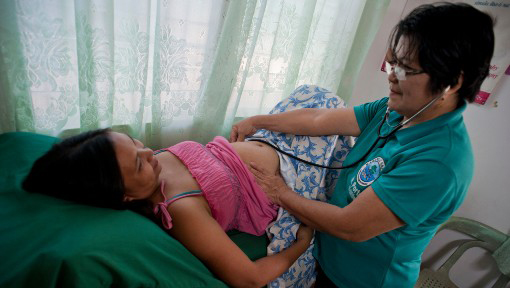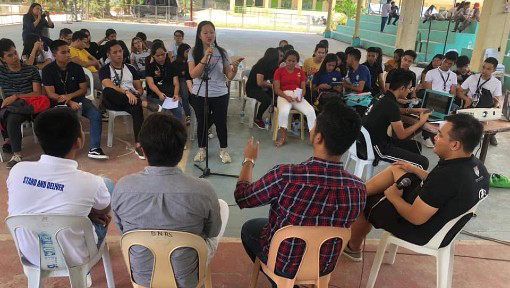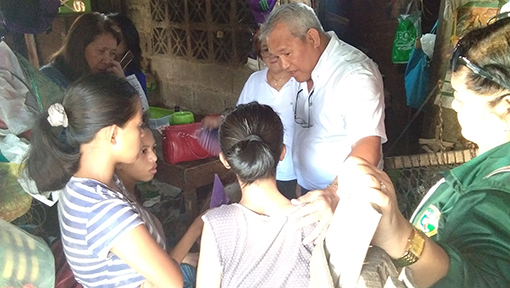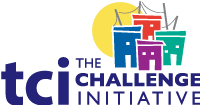Philippines Toolkit: Service Delivery
- Home
- Help and Support
- Close
- Toolkits
- Global Toolkit
- AYSRH Toolkit
- Hub Toolkits
- Core High-Impact Practices
- Gender Essentials Mini Course
- Close
- Resource Collection
- Community of Practice
- Coaching
- Log In/Register
- My Profile
- English
Post-Pregnancy Family Planning
 Post-pregnancy family planning (PPFP) involves offering and providing modern contraceptives from pregnancy through delivery and beyond the postpartum period. The aim is to prevent subsequent pregnancies for adolescent mothers and promote healthy child birth spacing among women of reproductive age through the use of modern contraception and family planning (FP) methods.
Post-pregnancy family planning (PPFP) involves offering and providing modern contraceptives from pregnancy through delivery and beyond the postpartum period. The aim is to prevent subsequent pregnancies for adolescent mothers and promote healthy child birth spacing among women of reproductive age through the use of modern contraception and family planning (FP) methods.
Offering FP counseling during pregnancy and as part of childbirth care helps raise awareness about the importance of birth spacing and the available postpartum contraceptive options. FP services may be provided in the following ways:
- Prenatal Visits: It is recommended to schedule prenatal visits at least once during the 1st trimester, once during the 2nd trimester, and twice during the 3rd trimester. Additionally, FP counseling should occur upon the mother’s admission for delivery.
- Immediate Postpartum Family Planning (IPPFP): This should be provided within 48 hours before the mother is discharged from the birthing facility.
- Early Postpartum Family Planning (EPPFP): This should be offered from 48 hours up to 6 weeks postpartum, typically during the first well mother and baby check-up or the first Expanded Program on Immunization (EPI) day of the baby.
- Postpartum Family Planning Provision: Available from 6 weeks up to 1 year postpartum.
- Post-Pregnancy Family Planning Provision: Provided beyond 1 year postpartum, as part of regular family planning services.
What Are the Benefits of PPFP?
- Studies conducted by Pasha et al. (2015) have shown that over 90% of women, including adolescents, express a desire during their first year postpartum to either delay the next pregnancy for at least two years or avoid future pregnancies altogether.
- Providing FP counseling as an integral part of childbirth care raises awareness about the importance of birth spacing and postpartum contraceptive options. This creates an opportunity to introduce FP to new clients.
- Offering modern contraception as part of childbirth services increases the utilization of postpartum contraceptives, thereby optimizing the available human resources at the facility to provide FP services.
PPFP as a High-Impact Practice (HIP) in relation to Universal Health Care (UHC)
The PPFP HIP approach aims to enhance the FP program of the Local Government Unit (LGU) by fostering increased voluntary uptake of modern contraceptive methods. This is achieved by establishing a system that ensures all Service Delivery Points (SDPs) can provide basic FP counseling and services internally, while also being linked with specialized facilities capable of providing longer-acting or permanent FP services. This ensures universal FP coverage.
For FP provision to be considered adequate, the system must include:
- Health Services: Ensure that there are fully-equipped and sufficient SDPs covering the entire catchment area under the LGU’s jurisdiction.
- Human Resources for Health: Have at least 1-2 trained service providers in each facility capable of offering basic Family Planning (FP) services, including FP counseling and Short-Acting Reversible Contraceptives (SARC).
- Health Governance: Ensure that all SDPs can either provide or connect with higher-level facilities capable of offering longer-acting reversible contraceptives (LARCs) or permanent contraceptive methods through a service delivery network (SDN).
- Health Governance: Ensure that all SDPs adhere to standardized protocols for service provision in line with the Responsible Parenthood and Reproductive Health RPRH Law and the Department of Health’s (DOH) FP Clinical Standards Manual.
- Health Financing: Require all SDPs to be accredited under the corresponding PhilHealth accreditation package to receive reimbursement for long-acting FP services. This ensures a sustainable funding mechanism for restocking commodities.
How to Implement
Step 1: Conduct mapping of facilities and services to identify catchment areas for FP provision
The distribution of SDPs can vary based on factors such as the complexity of services required, population density, and the structure of the health system. Typically, the City Health Office conducts zoning activities to determine optimal catchment areas for health centers. As a general guideline, ensure that:
- All Health Centers (HCs) are equipped to provide FP counseling and SARCs.
- All lying-in clinics and 60% of HCs should be capable of providing Long-Acting Reversible Contraceptives (LARCs).
- At least one facility (hospital or infirmary) should be available for referral of Non-Scalpel Vasectomy (NSV) and Bilateral Tubal Ligation (BTL).
Under Step 1, the following actions shall be done:
- Map out the SDP infrastructure and check the following:
- Appropriate signage displaying patient’s charter, clinic schedule, services being offered, service providers, charter of patient’s rights;
- Advocacy materials providing accurate up-to-date information;
- Triage area;
- Consultation room for physical examinations;
- Separate enclosed room for FP counseling;
- Protocol for referral to other facilities if desired FP method is unavailable;
- First-aid station with operating table and equipment for Progestin Subdermal Implant (PSI);
- Labor and delivery room equipped with a birthing bed with stirrups for Postpartum Intrauterine Devices (PPIUD); and,
- Minor operating room equipped for minor surgeries (for NSV and BTL).
- Review the documentary requirements of SDPs, ensuring facilities specialized in providing LARCs or permanent FP methods have:
- DOH License to Operate (LTO);
- PhilHealth accreditation for healthcare providers;
- PhilHealth accreditation for Primary Care Facility and other applicable packages (Free-standing FP, Maternal Care); and,
- Certificate of Training of healthcare providers in Family Planning Competency-Based Training (FPCBT) 1, FPCBT-2 PSI and/or FPCBT-2 PPIUD/IUD.
By mapping out the facilities, providers, and their training statuses, the City Health Office can identify gaps in FP training that need to be addressed.
Step 2: Strengthen healthcare provider capacity via Family Planning Competency-Based Training (FPCBT)
Family Planning Competency-Based Training (FPCBT 1 and 2) is a comprehensive training course designed to equip healthcare workers with the skills, knowledge, attitude, and values necessary to deliver quality FP services (PRC Website, 2017). These training sessions are usually offered by DOH-accredited institutions and cover a range of topics including common FP methods, patient counseling techniques based on the GATHER approach, principles of Informed Choice and Voluntarism (ICV), and technical skills for FP commodity provision. For the provision of permanent methods such as BTL and NSV,, a practicum in a partner hospital is required as part of the training course.
Successful completion of the training program involves undergoing a Post-Training Evaluation (PTE) typically six months after training. During the PTE, healthcare workers are required to log a specific number of clients who have received FP services. Upon completion, providers receive a Certificate of Training endorsed by the FPCBT training institution and the DOH-Center for Health Development (CHD).
Tip: Some LGUs face challenges in scheduling PTEs, which involve coordinating client schedules and inviting return demonstration assessors. Alternatively, LGUs can consider conducting Objective Structured Clinical Examinations (OSCE) for participants, provided that these are (1) conducted under the supervision and coordination of the DOH-CHD and the training institution, with (2) demonstration-return demonstration recorded via video in an accredited FP facility. Coordinate with your respective DOH-CHD FP Coordinator.
See box below Steps.
Step 3: Increase the opportunities for providing FP services
- Broaden the scope of FP offerings: Extend the availability of family planning services to various settings where mothers or fathers are present, such as during prenatal consultations, initial well-baby check-ups, or scheduled infant immunizations.
Tip: In other countries supported by The Challenge Initiative (TCI), integrating family planning services together with infant immunization has proven to be a high-impact practice. This strategy provides more opportunities for postpartum women to consider and access FP methods shortly after childbirth, reducing the risk of unintended pregnancies.
- Establish dedicated FP days: Consider allocating specific days or time slots at SDPs exclusively for FP services. These “Family Planning days” (referred to as Fixed Day Static in India) involve targeted demand generation activities alongside expedited delivery of FP commodities to clients. It is important to note that fixed FP days should not disrupt the regular provision of other health services. Instead, clients seeking FP services are guided through a separate patient flow to streamline the process.
- Conduct targeted outreach activities: Organize focused outreach activities, particularly in areas with high Unmet Need, elevated Adolescent Birth Rates, or geographically isolated and far from SDPs. These outreach efforts may involve specific events dedicated to FP provision, sunset clinics tailored for special populations, or other outreach approaches tailored to the community’s needs.
Step 4: Conduct orientation on PPFP for Community Health Volunteers/Barangay Health Workers
- Orient CHVs on the fundamentals of the FP program: Provide CHVs with an understanding of Informed Choice and Voluntarism principles and offer basic competency training through the BHW Basic Training Course. During their house-to-house visits, empower CHVs to conduct FP surveys in their designated areas. These surveys help identify individuals with Unmet Needs for FP, those currently using FP methods (including type and next follow-up schedule), families with more than four children or considering permanent FP methods, and sexually active adolescent women and men. These target groups typically require ongoing monitoring for FP services.
Tip: In Naga City, CHVs have been trained to integrate basic FP provision into their routine house-to-house visits. CHVs can offer OCP or condom refills to clients from the Target Client List (TCL) provided that (1) clients have initially obtained their FP commodities from the Health Center (HC) and (2) are still required to return to the HC for reassessment of their FP needs within three months. - Enhance FP promotion and education during house-to-house visits: CHVs are well-positioned to deliver initial FP promotion and education during their visits. Capacitate CHVs in health promotion by providing guidance on delivering key messages supporting FP and equipping them with educational materials. Emphasize the principles of ICV for all clients. Consider organizing a Whole-site orientation of SDPs to educate CHVs on ICV.
Step 5: Document provision and uptake of PPFP services
- Establish FP Registry in all SDPs. Health facilities providing FP services are required to submit data on Modern and Natural FP methods to the Field Health Services Information System (FHSIS) database. Conducting quarterly data reviews (Data Quality Checks) is strongly encouraged to maintain data accuracy and facilitate timely decision-making.
- In addition to collecting data, it is important to assess the quality of service delivery and the ease of the process. Implementing a client satisfaction survey in each HC can provide valuable feedback. Utilizing a Quality Implementation Checklist specifically designed for assessing PPFP can help monitor service quality.
- Ensure that women and adolescents who have received post-pregnancy loss care and have initiated FP methods are also included in the documentation process.
Competencies
FAMILY PLANNING COMPETENCY-BASED TRAINING 1
Prerequisites: Registered midwives, nurses, general physicians (Registered Obstetricians exempted)
TRAINING + PRACTICUM (5 days)
- Orientation on Philippine FP Program
- Human Reproductive Anatomy
- Informed Choice and Voluntarism
- FP Client Assessment
- Infection Prevention in FP services
- Fertility awareness-based method
- Lactation amenorrhea
- Hormonal contraceptive(COC, POP)
- Condoms
- Counseling for FP / GATHER (Greet, Ask, Tell, Help, Explain, Return) Approach
- Counseling Demo-Return Demo (1 day)
POST-TRAINING EXAM (6 months after)
FPCBT 2 - PROGESTIN-ONLY SUBDERMAL IMPLANT
Prerequisites: Registered midwives, nurses, general physicians (Registered Obstetricians exempted); FPCBT 1 Training
TRAINING (3 days)
- Informed Choice and Voluntarism
- Counseling, Informed Consent
- Insertion and removal of PSI
- Infection Control, Management of Side Effects
SKILLS TRAINING AND PRACTICUM (1 day)
- Skills training on PSI insertion and removal
- Subdermal Implant Insertion on 10 clients
POST-TRAINING EXAM (6 months after)
- Provision of PSI on 10 clients (at least 1-2 observed by during return demo PTE)
FPCBT 2 - POSTPARTUM INTRAUTERINE DEVICE INSERTION
Prerequisites: Registered midwives, nurses, general physicians (Registered Obstetricians exempted); FPCBT 1 Training; Training hospital for practicum
TRAINING
- Informed Choice and Voluntarism
- Counseling, Informed Consent
- Local Anesthesia, Surgical insertion of IUD
- Infection Control, Management of Side Effects
SKILLS TRAINING AND PRACTICUM (2 days)
- Skills training on IUD insertion
- Postpartum IUD insertion on 10 clients
POST-TRAINING EXAM (6 months after)
- Provision of IUD on 10 clients (at least 1-2 observed by during return demo PTE)
FPCBT 2 - INTERVAL INTRAUTERINE DEVICE INSERTION
TRAINING
- Informed Choice and Voluntarism
- Counseling, Informed Consent
- Infection Control, Management of Side Effects
SKILLS TRAINING AND PRACTICUM (2 days)
- Skills training on IUD insertion
- Interval IUD insertion on 10 clients
POST-TRAINING EXAM (6 months after)
- Provision of IUD on 10 clients (at least 1-2 observed by during return demo PTE)
NO SCALPEL VASECTOMY
FP Permanent Method Training
Prerequisites: Registered midwives, nurses, general physicians (Registered Obstetricians exempted); FPCBT 1 Training; Training hospital for practicum
TRAINING (2 days)
- Informed Choice and Voluntarism
- Counseling, Informed Consent
- Surgical Procedure, Anesthesia
- Infection Control, Management of Side Effects
- Post-operative Management
PRACTICUM (2 days)
- Postpartum IUD insertion on 5 clients
BILATERAL TUBAL LIGATION BY MINILAPAROTOMY UNDER LOCAL ANESTHESIA
FP Permanent Method Training
Prerequisites: Registered physician (Registered Obstetricians exempted), team of nurses, and midwives; FPCBT 1 Training; Training hospital for practicum
TRAINING (2 days)
- Informed Choice and Voluntarism
- Counseling, Informed Consent
- Surgical Procedure, Anesthesia
- Infection Control, Management of Side Effects
- Post-operative Management
PRACTICUM (2 days)
- BTL on 5 clients
Indicators for success
Vertical Indicators
- Inclusion of PPFP into the Program Design
- Inclusion of PPFP in the Work & Financial Plan, Annual Operational Plan, Annual Investment Plan
- Adoption of PPFP standards as per DOH Manual on Family Planning
Horizontal Indicators
- # of health facilities eligible to provide immediate PPFP
- # of providers trained/oriented on immediate PPFP and FP Competency-based Training
What evidence supports the strengthening of family planning through PPFP?
- Offering modern contraception services as part of care provided during childbirth increases postpartum contraceptive use and is likely to reduce both unintended pregnancies and pregnancies that are too closely spaced (Cleland et al., 2012; Kozuki et al., 2013).
- Adolescent mothers who received immediate postpartum counseling in Thailand were 3.67 times more likely to use LARC than those who received conventional (4-6 weeks) postpartum counseling (Kaewkiattikun, 2017).
- In India, women who had received family planning counseling during their time of delivery at a health facility were more than twice as likely to use a method postpartum than those who had not received family planning counseling (Achyut et al., 2016).
- There is a significant missed opportunity for family planning in the postpartum period in the Philippines, according to an analysis of 2008 DHIS data: “The majority of pregnancies occur between 12 and 23 months after a birth and the percentages of very short (< 6 months) intervals are less than 5%, except in certain surveys from Asian countries: Pakistan (10%), Philippines (8%) and Bihar and Uttarakhand (7% each). These four surveys also have the highest percentages of interpregnancy intervals shorter than 1 year, with approximately one in five (19–24%) of second or higher-order live births conceived within 1 year of the previous birth” (Moore et al., 2015).
TCI APP USERS PLEASE NOTE
You will only receive CERTIFICATES by email – when earning a score above 80% – and will not be able to view or print a certificate PDF from the TCI app.
Test Your Knowledge
Earn a Certificate
Quiz Summary
0 of 5 Questions completed
Questions:
Information
You have already completed the quiz before. Hence you can not start it again.
Quiz is loading…
You must sign in or sign up to start the quiz.
You must first complete the following:
Results
Results
0 of 5 Questions answered correctly
Your time:
Time has elapsed
You have reached 0 of 0 point(s), (0)
Earned Point(s): 0 of 0, (0)
0 Essay(s) Pending (Possible Point(s): 0)
Categories
- Not categorized 0%
- 1
- 2
- 3
- 4
- 5
- Current
- Review
- Answered
- Correct
- Incorrect
-
Question 1 of 5
1. Question
PPFP refers to preventing unintended pregnancies and closely spaced pregnancies for the first 12 months after childbirth, and even up to two years following childbirth.
CorrectIncorrect -
Question 2 of 5
2. Question
Benefits of PPFP include:
CorrectIncorrect -
Question 3 of 5
3. Question
The methods available for PPFP include:
CorrectIncorrect -
Question 4 of 5
4. Question
How useful did you find the information and/or tools presented on this page? Please write your response in the box below using one of the following phrases: Very useful, Useful, Somewhat useful, Not useful.
Feel free to comment on why you made that choice.
-
This response will be awarded full points automatically, but it can be reviewed and adjusted after submission.
Grading can be reviewed and adjusted.Grading can be reviewed and adjusted. -
-
Question 5 of 5
5. Question
How do you intend to use the information reviewed and/or tools that you accessed?
-
This response will be awarded full points automatically, but it can be reviewed and adjusted after submission.
Grading can be reviewed and adjusted.Grading can be reviewed and adjusted. -
Services and Supply Approaches
Challenges
- One of the primary challenges is the limited availability of DOH-Accredited training institutions offering courses for FPCBT 2, which covers PSI, PPIUD, NSV, BTL. To address this, it is advisable to reach out to your respective DOH-CHD to explore opportunities for partnerships with these institutions.
Training fees for these courses are standardized as follows:- FPCBT 1: PhP 6,000 per participant, with a minimum of 20 participants
- FPCBT 2 PSI: PhP 6,500 per participant, with a maximum of 10 participants
- FPCBT 2 Postpartum IUD: PhP 11,500 per participant, with a maximum of 10 participants
- Additionally, FPCBT requires all trainees to undergo a PTE six months after completing the training. This evaluation is overseen by the DOH-CHD and the respective training institution. Typically, it involves a demonstration-return demonstration setup with actual clients.
External Resources
- Postpartum contraceptive use and unmet need for family planning in five low-income countries. Pasha O, Goudar SS, Patel A, et al. 2015
- Professional Regulation Commission Continuing Professional Development Accreditation System. Family Planning competency-based Training Level . 2017
- The Open University HEAT Program. (2014). GATHER Approach
- High Impact Practices in Family Planning (HIP). Family Planning and Immunization Integration: Reaching postpartum women with family planning services.
- Department of Health. Barangay Health Workers’ Reference Manual. 2022
- Impact evaluation of the Urban Health Initiative in urban Uttar Pradesh, India. Achyut P, Benson A, Calhoun LM, et al. 2016
- The effects of postnatal health education for mothers on infant care and family planning practices in Nepal: A randomised controlled trial. Bolam, A, Manandhar, D, Shrestha, P, Ellis, M, Costello, A. 1998
- Belief in Family Planning Myths at the Individual and Community Levels and Modern Contraceptive Use in Urban Africa. Gueye A, Speizer IS, Corroon M, Okigbo CC. 2015







